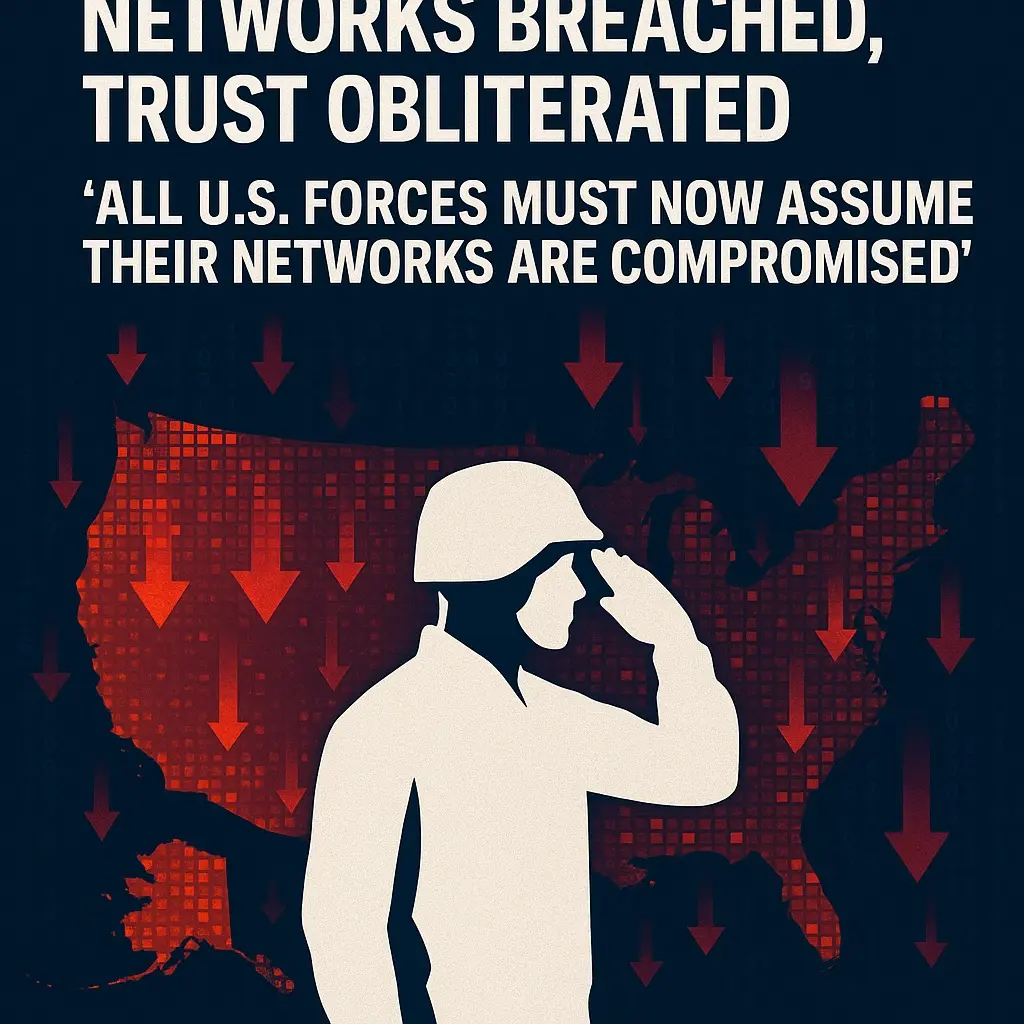By
Gigabit Systems
July 17, 2025
•
20 min read

Networks Breached, Trust Obliterated
‘All U.S. Forces Must Now Assume Their Networks Are Compromised’
Cybersecurity experts are sounding the alarm after Chinese-linked espionage group Salt Typhoon quietly infiltrated a U.S. National Guard network—laying low for nearly a year and exfiltrating sensitive data that could compromise national infrastructure.
A Silent Breach, a Loud Wake-Up Call
According to a declassified Department of Defense report—released after a FOIA request—the breach began in March 2024 and went undetected until December. In that time, Salt Typhoon reportedly accessed:
Network diagrams and admin credentials
Configuration files from critical infrastructure providers
Files tied to 70 government and infrastructure entities across 12 sectors
This includes sectors like energy, communications, wastewater, and transportation, raising red flags about follow-on attacks and cascading consequences.
The breach was so extensive that DoD officials warned all U.S. military forces to operate under the assumption their networks are compromised.
The Next Phase of Cyber Warfare Is Already Here
Salt Typhoon has already been linked to cyber intrusions at AT&T, Verizon, and even to intercepted conversations between top U.S. political officials. Their strategy is chilling: steal network configs, map targets, then breach them with surgical precision.
“This isn’t hypothetical,” said Gary Barlet, former CIO for the Air Force Ground Networks. “This is an active lateral threat with the capability to leap across systems and units. Breach containment is no longer optional—it’s a matter of national defense.”
What SMBs Must Learn from This
If elite U.S. military systems can be compromised, small and mid-sized businesses are even more vulnerable. Here’s what SMBs can do now to harden their defenses:
1.
Embrace Zero Trust
Never trust, always verify. Enforce strict access controls, segment networks, and require identity verification at every access point.
2.
Monitor for Lateral Movement
Use endpoint detection and response (EDR) solutions to catch attackers trying to move from one system to another inside your network.
3.
Regularly Audit Config Files and Admin Credentials
Most attackers exploit misconfigured systems and exposed credentials. Conduct quarterly reviews, and rotate credentials routinely.
4.
Prepare for Breach Containment
Assume compromise. Invest in containment solutions that limit blast radius if a breach occurs—like software-defined segmentation.
5.
Train Your Teams
Employees are the first line of defense. Run phishing simulations, require cybersecurity training, and create a culture of caution.
The Bottom Line
Salt Typhoon didn’t just breach a single system—they exposed the fragility of an entire digital ecosystem. Their infiltration shows how vulnerable even hardened networks can be. For SMBs, the takeaway is clear:
You may not be a target because of who you are—but because of who you connect to.
70% of all cyber attacks target small businesses. I can help protect yours.
#cybersecurity #zerotrust #nationstates #SMBsecurity #databreach